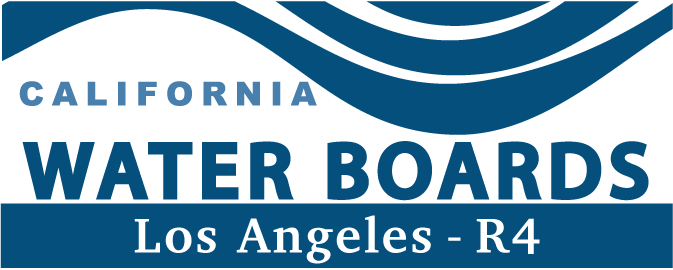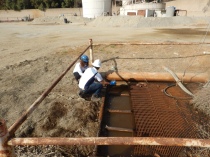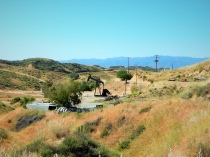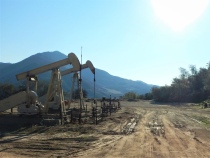Oil and Gas Operation - Water Quality
Announcements
-
Oil & Gas Stakeholder Meeting - August 12, 2020
Oil & Gas Stakeholder Meeting
Wednesday, August 12, 2020
1:30 p.m. - 3:30 p.m. PDT
VIRTUAL PARTICIPATION ONLYThe US Geological Survey (USGS) will be presenting brief summaries of recently published interpretive manuscripts for studies conducted as part of the State Water Board's Oil and Gas Regional Monitoring Program (RMP). Please see the attached agenda for links to the manuscripts.
HOW TO PARTICIPATE:
- To observe the meeting, access the live webcast at https://video.calepa.ca.gov/ (find our meeting and select the video link)
- If you would like to ask questions or provide comments regarding the presentation during the meeting, please complete the following instructions.
- Send an email to OilandGas@waterboards.ca.gov
- In the subject line, indicate "Stakeholder Meeting Comment"
- In the body of your email include the following:
- Your name
- Who you represent (i.e. self, another person, an organization)
- Your concise question or comment
Questions or comments submitted will be read aloud and will be responded to.
- For technical support, send an email to OilandGas@waterboards.ca.gov with "Technical Support" as the subject line
LANGUAGE SERVICES
If you require language interpretation or sign language services, please email a request to OilandGas@waterboards.ca.gov at least 15 business days before the meetingBACKGROUND
California Water Code section 10783 (Senate Bill 4, Pavley, statutes of 2013) requires the State Water Board to implement a regional groundwater monitoring program. The program goal is to evaluate potential impacts from oilfield operations and characterize the risk to groundwater resources, while prioritizing areas to be monitored. The U.S. Geological Survey is technical lead and will be presenting summaries on their recently published studies
The State Water Resources Control Board (State Water Board) and the nine Regional Water Quality Control Boards (Regional Water Boards) have the statutory responsibility to protect the waters of California and to preserve all present and future beneficial uses of those waters.
In conjunction with the State Water Board, the Regional Board Oil and Gas program monitors and evaluates potential impacts to groundwater from well stimulation (hydraulic fracturing) activities, enhanced oil recovery activities as part of the underground injection control (UIC) program, and produced water ponds in Los Angeles and Ventura counties. This work includes UIC review, Aquifer Exemption review, and Project by Project review as required by regulation.
In addition to working with the State Water Board, the Regional Board Oil and Gas program works with the Department of Conservation's Geologic Energy Management Division (CalGEM). CalGEM oversees the drilling, operation, maintenance, and plugging and abandonment of oil, natural gas, and geothermal wells to prevent underground and surface water contamination. The Water Boards assist CalGEM to make sure oil and gas operations located within Los Angeles and Ventura counties adhere to all regulations associated with groundwater and surface water protection.
Current issues the Los Angeles Regional Water Board is addressing:
- Model Criteria for Groundwater Monitoring in Areas of Oil and Gas Well Stimulation:
- Underground Injection Control (UIC) Program:
- Sumps and Storage Ponds:
Specified in California Water Code Section 10783 (Senate Bill 4, Pavley Statues of 2013), the State Water Board has developed and adopted (July 2015) model criteria for groundwater monitoring of oil and gas well stimulation activities. Click here to see all Orders and Directives associated with the Model Criteria
Injection wells, which carry and permanently place fluids underground, are a potential groundwater contamination source if not properly sited, constructed and maintained. Injection wells are regulated by the United States Environmental Protection Agency under the authority of the Underground Injection Control (UIC) Program. Please go to GeoTracker to see all Orders and Directives associated with the UIC Program.
Lined and unlined pits or ponds that hold oil and gas production byproducts such as drilling fluids and produced water. Produced water accounts for the largest waste stream volume associated with oil and gas production and can contain high levels of hydrocarbons, volatile organic compounds, total dissolved solids, metals, boron, radionuclides, and other hazardous chemicals. Please go to GeoTracker to see all Orders and Directives associated with Sumps and Storage Ponds.
More Information
State Water Board Groundwater Monitoring for Oil and Gas Well Stimulation; and Activities Associated with Underground Injection Control (UIC):
https://www.waterboards.ca.gov/water_issues/
programs/groundwater/sb4/index.shtml
Model Criteria for Groundwater Monitoring in Areas of Oil and Gas Well Stimulation Fact Sheet:
https://www.waterboards.ca.gov/water_issues/
programs/groundwater/sb4/docs/
model_criteria_fact_sheet.pdf
Geologic Energy Management Division:
https://www.conservation.ca.gov/calgem/Pages/
Index.aspx
Geologic Energy Management Division Well Stimulation page:
https://www.conservation.ca.gov/calgem/Pages/
WST.aspx
GeoTracker
http://geotracker.waterboards.ca.gov/
If you have any questions about the State Water Board and the Regional Water Board's roles in protecting California's waters when it comes to oil and gas production, please contact Yue Rong, Environmental Program Manager, Los Angeles Regional Water Quality Control Board, at (213) 576-6710 or Yue.Rong@waterboards.ca.gov or Weixing Tong, Senior Engineering Geologist, Los Angeles Regional Water Quality Control Board, at (213) 576-6715 or Weixing.Tong@waterboards.ca.gov






